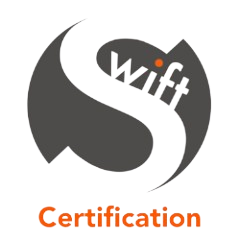Change is on the horizon for quality management. The internationally recognised ISO 9001 standard is undergoing its first major revision in almost a decade, with ISO 9001:2026 set to be published in September 2026. This update is driven by evolving business needs, rapid digitalisation, a stronger focus on resilience, and growing alignment with sustainability and ESG (environmental, social, and governance) considerations. For any organisation – whether already certified or looking to begin their quality journey – staying informed and engaged is key to ensuring a smooth and value-adding transition.
What’s Changing
Though the final text is still in development, international committees have released guidance on anticipated changes for ISO 9001:2026:
Risk-Based Thinking, Resilience & Supply Chain Control
- Greater emphasis on identifying and managing risks and opportunities, building organisational resilience, and controlling supply chain vulnerabilities.
Digitalisation and Emerging Technologies
- Stronger integration of digital tools like AI, automation, cloud-based systems, and data analytics, alongside improved documentation and record control.
Sustainability and ESG Alignment
- Explicit links to environmental, social, and governance objectives, encouraging responsible sourcing, life-cycle thinking, and reporting.
Leadership and Stakeholder Focus
- Broadened definition of “interested parties” to better include communities, regulators, and future stakeholders, as well as stronger calls for ethical leadership and culture of quality.
Business Continuity and Agility
- Clearer requirements for business continuity planning, change management, and adaptive strategies.
Simplified Structure
- Improved clarity and compatibility via Annex SL, making integration with other standards (like ISO 14001 and ISO 27001) easier for organisations of all sizes.
What Stays the Same
Despite significant enhancements, ISO 9001:2026 will continue to:
- Use the Annex SL framework, ensuring a familiar structure and making it straightforward to integrate ISO 9001 with other management standards.
- Retain the core principles of process-based thinking, continual improvement, customer focus, and evidence-driven decision-making.
- Support organisations of any sector, size, or level of complexity – no major overhaul of the certification scheme is anticipated.
Preparing Your QMS Now
The best time to future-proof your quality management system is now:
1. Review and Strengthen Process-Based QMS
- Ensure your QMS reflects how your business actually operates – not just the clauses of the standard.
- Consider how digitalisation, resilience, and supplier management can be improved.
2. Conduct Pre-Transition Gap Assessments
- Use internal audits to assess readiness for expected changes – e.g. climate and ESG, digital records, risk management.
- Capture actions in your improvement plan and present findings to management.
3. Harmonise Management Systems
- If you are certified to multiple ISO standards, review clause mapping and terminology in preparation for easy integration.
4. Engage Top Management and Employees
- Communicate early about the revision, encourage feedback and awareness, and embed quality into organisational culture.
5. Update Training and Documentation
- Provide relevant training, update procedures, and start recording how changes will impact operations.
Managing the Transition
1. Stay Informed
- Track ISO updates and committee news – final drafts and transition guidance will be released as the standard develops.
2. Plan Your Timeline
- Expect a three-year transition window once ISO 9001:2026 is published; plan for milestones: procedural review, retraining, internal audit, and recertification.
3. Communicate with Certification Bodies
- Speak early with your UKAS-accredited certifier or partners like Swift Certification to understand requirements and best practice.
4. Focus on Stakeholder Engagement
- Involve relevant personnel: managers, auditors, supply chain partners, and customers where appropriate.
5. Leverage Digital Tools and Expertise
- Use digital QMS solutions for document control, workflow automation, and audit management.
FAQs on ISO 9001 Transition
When will ISO 9001:2026 be published?
Final publication is expected in September 2026, with the Draft International Standard (DIS) version circulating from mid-2025.
How long do I have to transition?
Organisations will have a typical three-year transition window (to September 2029, if announced dates hold).
Will ISO 9001:2015 certificates remain valid?
Yes, until the transition period ends. You will need to update your QMS and undergo a transition audit to maintain certification after the deadline.
Do I need to start now?
Early preparation is strongly advised. Begin by strengthening process-based systems, staying engaged with industry updates, and consulting your certifier.
What are the main differences expected?
More requirements around digitalisation, climate risk, supply chain controls, ESG alignment, and resilience.
Conclusion
Early action on the ISO 9001:2026 revision is an investment in continued quality leadership and market advantage. By embracing upcoming changes, organisations can ensure compliance, streamline their management systems, and demonstrate a proactive commitment to quality, sustainability, and digital transformation.
Take the lead on quality – invest in process-based systems, prepare now for ISO 9001:2026, and engage with your certification body early to schedule assessments and audits.





Your writing is so genuine and heartfelt It’s refreshing to read a blog that is not trying to sell something or promote an agenda
Thank you, dear reader, we’re glad you enjoyed reading this blog!